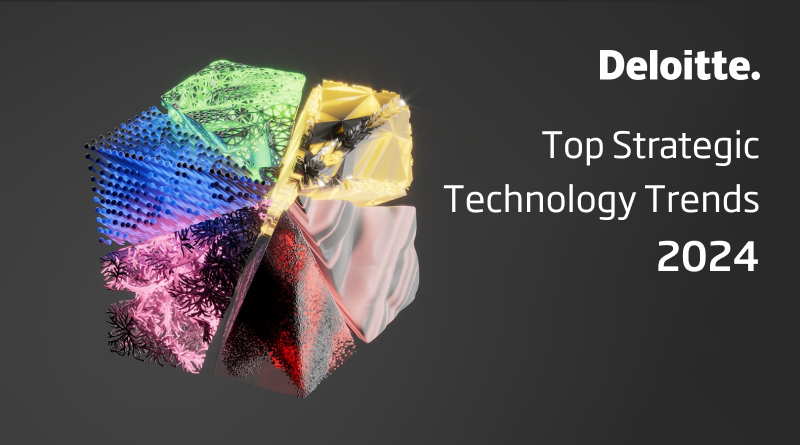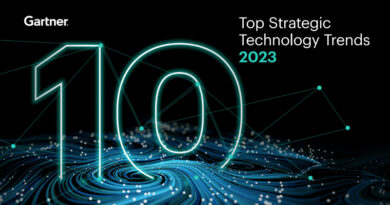Six technological trends for this 2024 according to Deloitte
If last week we talked about Gartner’s technology trends for 2024, today we are going to see what they are going to be from the point of view of Deloitte, which has also published its relevant report.
Deloitte sees six technology trends this year where, in an era marked by the advancement of generative artificial intelligence, it is critical for companies to maintain a unified business strategy, a robust technology base and a creative workforce.
Let’s see what they are.
Technological trends
1.- Interaction: Space Computing and the Industrial Metaverse

Spatial computing has become an essential tool for businesses, especially in the field of industrial applications. Notable advances include digital twins, spatial simulation, augmented work instructions and collaborative digital spaces.
These spatial applications are opening the door to innovations such as remote surgeries or factories controlled by a single connected operator. Examples such as the collaboration between Hyundai Motors and Unity to create a large-scale factory simulation, or the launch of Apple Vision Pro, show the direction we are heading in. Based on these possibilities, some projections estimate that the space computing market will exceed $600 billion by 2032.
Improvements in the industrial metaverse, which uses spatial data and artificial intelligence (AI) to generate immersive imagery, are paving the way for a working space network that will transform the way we work across all sectors. The outlook for this technology is very promising, with revenues forecast to approach $100 billion by 2030, significantly outpacing the consumer ($50 billion) and enterprise ($30 billion) sectors.
2.- Information: Generative AI as a catalyst for growth

Generative artificial intelligence has the ability to emulate human skills through increased processing power, stronger training data and intelligent programming, representing an opportunity to boost business productivity and efficiency.
While there has been much debate about the threat this technology could pose to the labour market, a survey of executives reveals that the most common reasons for adopting it are to improve content quality, drive competitive advantage and enrich the employee experience.
Today, innovative companies are taking a strategic approach, where generative artificial intelligence is used to solve existing problems and differentiate themselves in the marketplace. To achieve this, it is necessary to improve infrastructure through application programming interfaces, control systems, effective governance barriers and an appropriate data architecture. Examples such as CarMax and Enbridge demonstrate how these companies are moving forward by implementing these technological advances.
3.- Computing. Smarter, not harder: beyond brute-force computation

The adoption of technology as a distinctive element has led companies to face more complex workloads. Today, cloud services often provide sufficient support for routine operations. However, there are complicated technology tasks, such as training artificial intelligence models, running complex simulations or creating digital twins of real environments, that can be difficult to execute with standard on-premises infrastructure.
Smarter programming and better management of IT resources could help companies speed up many of their processes. In this regard, companies that opt for specialised hardware tend to use mainly graphics processing units (GPUs) for training artificial intelligence models.
On the other hand, companies such as Amazon and Google are already using artificial intelligence chips designed to handle large volumes of data with lower power consumption than traditional processing units. In addition, quantum and neuromorphic computers are beginning to define the next era of computing.
4.- Business of technology: Empowering engineering expertise

In a context where technology is positioned as a key differentiator and an essential part of business, human talent is of unprecedented relevance. For this reason, software development jobs are projected to grow by 25% over the next decade, both in the technology sector and in other industries, compared to an average growth rate of 8% in other professions.
Today, developers face, on average, more than 250 software-as-a-service applications and other technical environments, which are often poorly integrated, leading to fragmentation of knowledge across teams. To address this inefficiency, companies can improve architecture, implement measurement and enablement tools.
New approaches such as DevEx (Developer Experience), which seeks to improve the productivity and satisfaction of software engineers, can lead to a future where integrated and intuitive tools drive enterprise technology value.
5.- Core modernisation: from technical debt to technological welfare

Seventy percent of technology leaders identify technical debt as a significant barrier to innovation in their companies, being the main cause of lost productivity. For this reason, companies that aspire to progress will need to move away from fragmented approaches and adopt a holistic technology wellbeing framework to address this problem.
Such a framework would help teams prioritise areas that require immediate solutions and those that can remain functional. Instead of accumulating more technical debt, it would diagnose the company’s technical problems to anticipate when to invest in solutions. Its focus would be on the five areas with the greatest impact and opportunity: infrastructure, data, applications, workforce, and cybersecurity and trust.
In the coming years, developments could move towards resilient technology capable of self-correcting its own code or obsolete systems. Artificial intelligence, embedded in core systems, would diagnose the accumulation of technical debt and help engineers write the code needed to modernise, streamlining remediation and compliance tasks, and could even do so autonomously in the future.
6.- Cybersecurity and trust: defending reality

Business security risks increase with every new content generation tool that appears on the market. Previously known threats, such as phishing, deepfakes, disinformation or prompt injection, can be exacerbated, causing damage to both the security and reputation of companies and even threatening the value of their stock.
In response to these challenges, leading companies are addressing these issues through a combination of policies and technologies. They aim to identify harmful content and increase employee awareness of cyber risks.
More information: Deloitte Tech Trends 2024
Header Image: Deloitte





